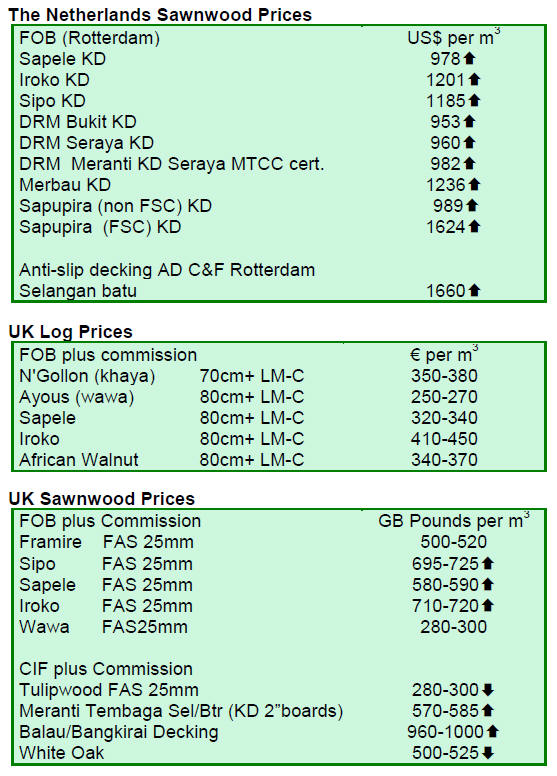|
Report
from
Europe
Ecobuild dwarfs other construction shows
The UK’s Ecobuild show just keeps getting bigger. The
show’s new larger site at ExCel in the London docklands
gave it a 50% bigger footprint than the 2010 event held at
Earls Court. Visitors over the three day period 1-3 March
are reckoned to have numbered around 50,000, a 20% gain
on 2010 and double the numbers seen only two years
before. The show boasted over 1,300 exhibitors and a
seminar programme hosting over 700 speakers.
Such is the success of Ecobuild that it dwarfs all other
construction shows in the UK. In fact its nearest rival
Interbuild, traditionally held in Birmingham in October,
has been cancelled this year for lack of interest. The rapid
growth in Ecobuild, which showcases green building
systems and materials, is a clear indication of the
significance now attached to sustainability issues in the
UK construction sector.
The rapid growth of the show has coincided with efforts to
implement the UK’s Climate Change Act of 2008 which
set tough legally binding emission reduction targets (by
34% in 2020 and a massive 80% in 2050) and introduced
five-yearly carbon budgets to help ensure those targets are
met. The building sector is a very high priority – UK
government figures indicate that 46% of the UK’s carbon
dioxide emissions come from fossil fuels burnt to provide
energy for buildings (split roughly 50:50 between the
residential and non-residential sectors).
A raft of measures has been introduced by the UK
government to improve energy efficiency and reduce
dependence on fossil fuels in the building sector, including
introduction of energy performance certification schemes
for various types of building, financial incentives for
installation of renewable energy and insulation at existing
properties, and tough mandatory energy performance
standards in Building Regulations.
Against the background of a generally depressed
construction sector in the UK, the ability of different
materials sectors to demonstrate their sustainability
credentials has become a critical competitiveness issue.
This Ecobuild show demonstrated that timber suppliers –
who were out in force – are keenly aware of this and have
raised their game sufficiently to at least match the green
marketing efforts of other material sectors.
Given that so much of the show was focused on structural
rather than finishing products, hardwoods – particularly
tropical hardwoods - were not prominent. Temperate
hardwoods were represented by the American Hardwood
Export Council (AHEC) which highlighted on-going
research to assess the full Life Cycle environmental
impact of US hardwoods in the European market.
Preliminary results indicate that US hardwoods used in
Europe have a large negative carbon footprint (i.e. store
much more carbon in product than they release through all
stages of harvesting, processing and transport to the EU).
AHEC was also promoting wider uptake of Environmental
Product Declarations (EPDs) by the international wood
industry. EPDs provide a valuable mechanism to present
unbiased, independently assessed, product-specific, and
comparative information on the environmental impacts of
all building materials across their full life cycle. EPDs are
being used increasingly as the basis for calculating
materials credits in green building rating systems such as
BREEAM, DGNB, and LEED.
A regrettable feature of the Ecobuild show was that there
were no exhibitors making a strong case for the
environmental merits of tropical hardwoods – a necessary
counterweight in a market where there are so many
prejudices against continued use of these products. The
PEFC stand at least had Malaysian representation – a sign
of how crucial certification has become for continued
market access of tropical hardwoods in this sector.
Positive prospects for tropical hardwoods
The UK-based Timber Trades Journal (TTJ) published its
annual Tropical Timber supplement in the last week of
April, containing a series of articles and expert
commentaries on prospects in the UK and wider European
market.
Major European concerns in relation to tropical timber
include: the potential impact of the EU Illegal Timber Law
(ITL) – to be fully implemented from 3 March 2012; the
impact of rising demand in emerging markets to reduce
availability of supply to Europe; the rate of uptake of
certification in tropical supply countries; and the extent to
which modified softwoods and temperate hardwoods may
substitute for tropical hardwoods in the future.
While there is clearly uncertainty about future prospects
to tropical wood in the European market, there are also
encouraging signals that many buyers remain committed
to sourcing and marketing genuine tropical hardwoods.
Representatives of Danzer and UCM noted their optimism
for the future of tropical timber in the European market,
highlighting their wide range, versatility and durability
which continue to give a competitive edge. The report
demonstrates that there is willingness amongst European
traders to back this confident talk with serious financial
investment in tropical timber.
Representatives of France-based Rougier reported on their
programme to invest €10-12 million per year in the
Central African sawmilling sector and a further €1 million
for forest certification and legality verification.
Similarly UK-based importer Latham’s explained their
recent decision to invest around £4.2 million in the
purchase the UK arm of the Denmark-based DLH
hardwood trading company. Prior to the purchase,
Latham’s were DLH UK’s biggest customer, accounting
for £4.5 million of its £15 million turnover and purchasing
around 6000 m3 of timber a year, mainly sapele, iroko,
idigbo, and bangkirai.
Latham’s decision to buy DLH UK was due to the latter’s
strong presence in the African sawn hardwood business
and their record in supply of certified legal and sustainable
timber. Latham’s are keen to develop both these areas of
business into the future.

 Related News:
|